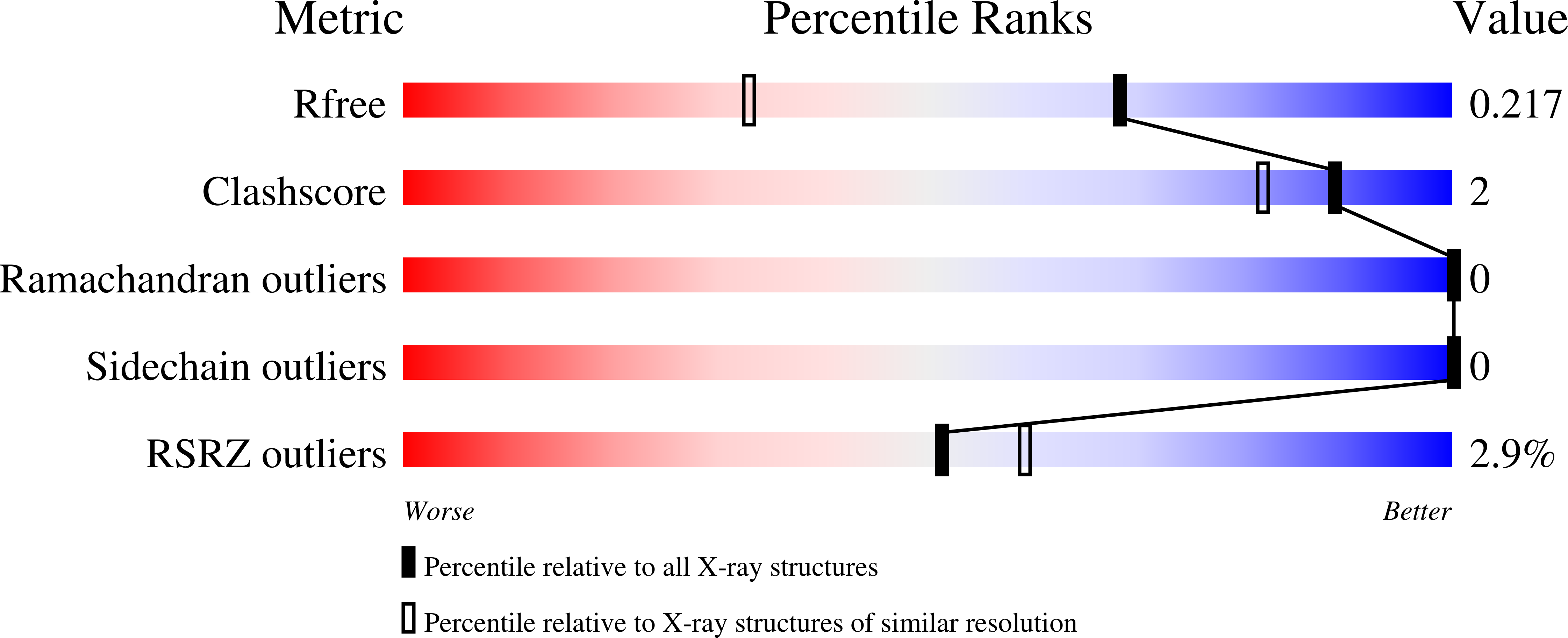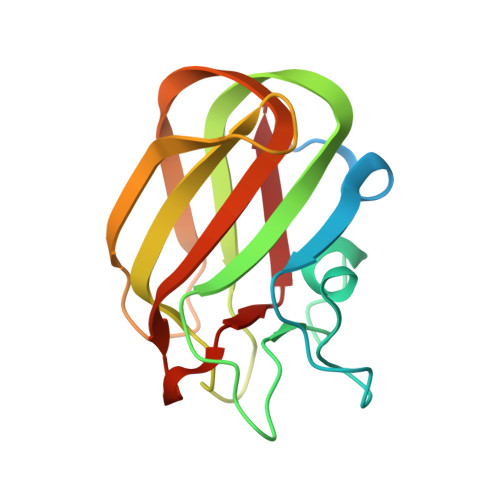Carbohydrate Recognition by an Architecturally Complex Alpha-N-Acetylglucosaminidase from Clostridium Perfringens.
Ficko-Blean, E., Stuart, C.P., Suits, M.D., Cid, M., Tessier, M., Woods, R.J., Boraston, A.B.(2012) PLoS One 7: 33524
- PubMed: 22479408
- DOI: https://doi.org/10.1371/journal.pone.0033524
- Primary Citation of Related Structures:
4A3Z, 4A41, 4A42, 4A44, 4A45, 4A6O, 4AAX - PubMed Abstract:
CpGH89 is a large multimodular enzyme produced by the human and animal pathogen Clostridium perfringens. The catalytic activity of this exo-¦Á-D-N-acetylglucosaminidase is directed towards a rare carbohydrate motif, N-acetyl-¦Â-D-glucosamine-¦Á-1,4-D-galactose, which is displayed on the class III mucins deep within the gastric mucosa. In addition to the family 89 glycoside hydrolase catalytic module this enzyme has six modules that share sequence similarity to the family 32 carbohydrate-binding modules (CBM32s), suggesting the enzyme has considerable capacity to adhere to carbohydrates. Here we suggest that two of the modules, CBM32-1 and CBM32-6, are not functional as carbohydrate-binding modules (CBMs) and demonstrate that three of the CBMs, CBM32-3, CBM32-4, and CBM32-5, are indeed capable of binding carbohydrates. CBM32-3 and CBM32-4 have a novel binding specificity for N-acetyl-¦Â-D-glucosamine-¦Á-1,4-D-galactose, which thus complements the specificity of the catalytic module. The X-ray crystal structure of CBM32-4 in complex with this disaccharide reveals a mode of recognition that is based primarily on accommodation of the unique bent shape of this sugar. In contrast, as revealed by a series of X-ray crystal structures and quantitative binding studies, CBM32-5 displays the structural and functional features of galactose binding that is commonly associated with CBM family 32. The functional CBM32s that CpGH89 contains suggest the possibility for multivalent binding events and the partitioning of this enzyme to highly specific regions within the gastrointestinal tract.
Organizational Affiliation:
Biochemistry and Microbiology, University of Victoria, Victoria, British Columbia, Canada.

















